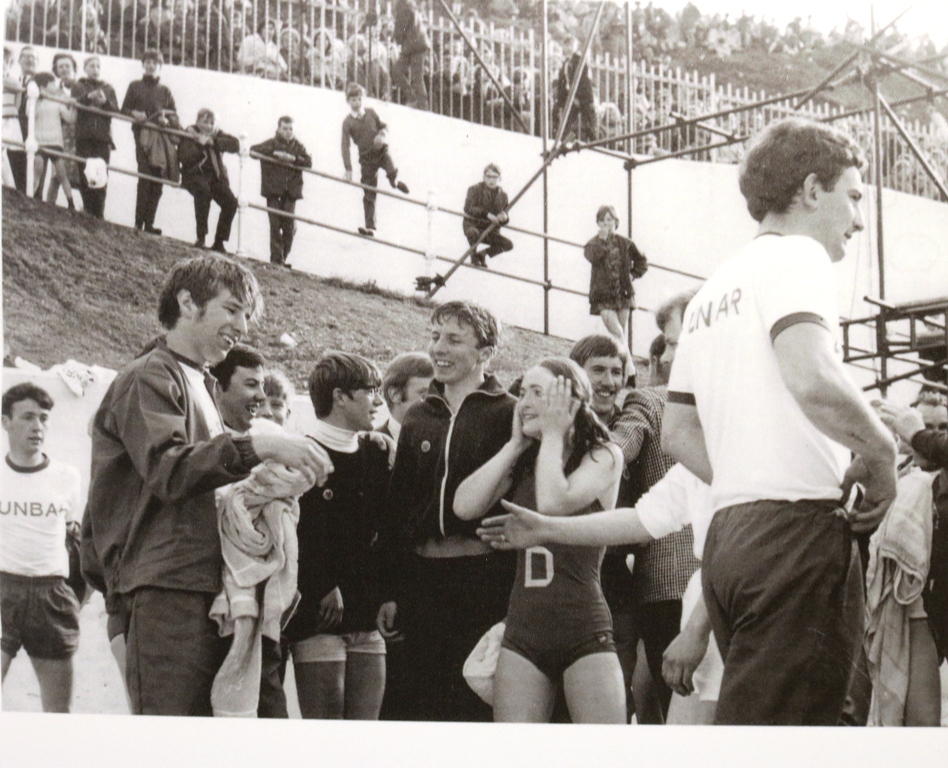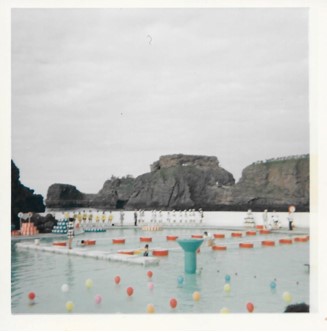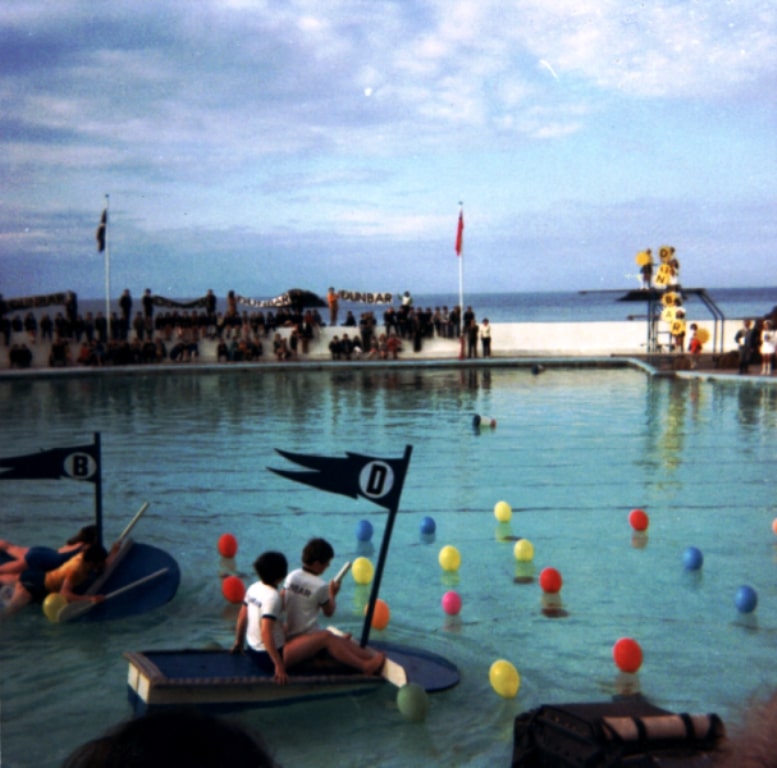In Dunbar’s social history, one of the key events – in terms of the visibility of the town to the outside world – happened on 4th June 1969, when 9 million people watched the It’s A Knockout programme which came from Dunbar Swimming Pool/Pond. The event itself had taken place on Sunday 1st June. Unfortunately, no video of the contest was kept, as the tape used by the BBC was extremely expensive and had to be reused. There was also a problem with compression in those days as the tapes would only hold so much film. Tapes were later developed that could hold much more video and many of these have survived.

The poster above was used to advertise the event on the 1st June, with the TV programme going out on Wednesday 4th June at 7.30pm. The enlarged poster shows that there was a range of ticket prices for the seating and standing areas. Tickets for the event – available through the Town Chamberlain’s Office. The 1947 Local Government (Scotland) Act stated that “Every town council shall appoint a town chamberlain of the burgh who shall be the chief financial officer of the council and may pay to him such reasonable salary as they may determine”. The Town Chamberlain at this time was G W Russell and the Town Clerk – the chief administrative officer – was S W (Sid) Brown. [Information supplied by David Anderson] The ticket prices are in shillings and pence as decimalisation did not arrive until February 1971.
The Haddingtonshire Courier reported that the crowd that day was 4,500 – the largest ever seen at the pool – and that people watched from the clifftops opposite. If you enlarge this (rather blurred) photo, you can see the people on the cliffs in front of what is now the indoor swimming pool. Interviews (by Jim Herring) with Dunbar team members reveal that it was ” A perfect, warm, sunny evening in Dunbar and the BBC could not have chosen a more perfect location. The pool was in picture postcard mode.” (Robin Forrest, team manager). The crowds were not confined to the pool itself or the clifftops. “As you came to The Glebe, all you could see was people – the slopes of the Glebe were crowded as was the walkway next to the pool and on the far side. The beauty contests used to be very busy, but this was something else – far busier”. (Bett Morrison (nee Darling), team member and one-time Pond Mistress.
The photo above shows one of the games which Dunbar won. On the Dunbar craft is Lex Horsburgh and Jaci Waite (now Bisset). Again, the photo is not very clear but you can see the blue skies above the cheerleaders at the far side of the pool. In an interview with Jaci Bisset, she said that, in the practice session, she and Lex worked out that if she sat close to him at the front of their boat, this would be more effective than the stance taken by the Burntisland team on the left, and this proved to be a successful move. At the end of the contest, both teams had the same points. The Haddingtonshire Courier reported “The Provosts of both towns watched the toss of the disc which had “Dunbar” on one side and “Burntisland” on the other – and when the “Dunbar” side was turned up, the home supporters’ cheers were deafening”. Dunbar had thus won the contest and became one of the British teams to go to take part in Jeux Sans Frontiéres in Martigny, Switzerland.
The jubilant Dunbar team at the end of the contest.
The final photo – the clearest, shows the reactions of the Dunbar team after they witness the toss of the disc. The interviewees said that this was the most tense part of the day and much more nerve wracking than taking part in the games and being closely filmed by the BBC TV cameras. An interesting feature of this is that none of those interviewed actually remember seeing the cameras during the games, so intense was their concentration. Their memories of the cameras are before the contest started. This photo also gives a very good impression of the crowds that stood on the Glebe’s grassy slopes and some who ventured on to the pathway above the pool. So this was a key day in the social history of Dunbar, with record crowds attending and millions of people seeing the contest – and of course the pool at its splendid best. Whether this increased tourism in Dunbar subsequently is hard to know but for free publicity as a tourist destination, this could not be bettered.



You must be logged in to post a comment.